When planning a water-based adventure, deciding between kayaking and rafting can be a challenge. Both sports offer unique experiences and cater to various skill levels, making it essential to weigh the pros and cons of each before diving headfirst into the world of aquatic excitement. Let’s explore the differences between these two popular water activities to help you make an informed decision.
Kayaking is best suited for those who prefer a more individual experience, as it typically involves navigating calm to moderate waters in a small boat propelled by a double-bladed paddle. It’s also versatile, with the option to navigate solo or with a partner in tandem kayaks. This flexibility makes it perfect for water enthusiasts of all experience levels, from beginners seeking a leisurely glide across the water to seasoned kayakers looking for a thrilling white-water challenge.
On the other hand, rafting is a group activity that brings people together to navigate sometimes turbulent waters in a large, inflatable boat. This adrenaline-pumping sport usually requires teamwork and coordination to safely conquer challenging rapids. Rafting is an excellent option for those desiring a social and adventurous atmosphere, with opportunities ranging from beginner-friendly floats to extreme white-water excursions. Regardless of the level of intensity, the collective cheering and camaraderie that comes with rafting create memories that’ll last a lifetime.
Contents
Contents
Comparing Kayaking And Rafting
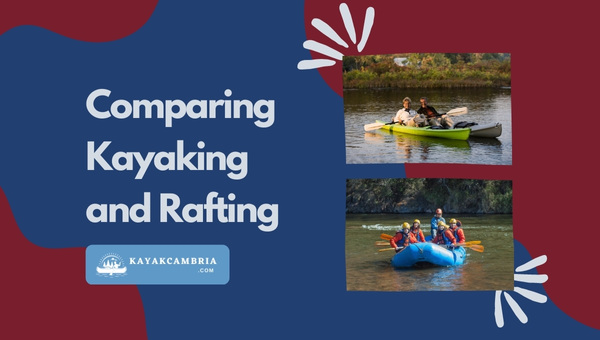
When it comes to water-based adventures, kayaking, and rafting are two popular options. In this section, I’ll compare these exhilarating activities to help you decide which one might be the best fit for you. Remember that both kayaking and rafting are exciting outdoor activities that offer unique experiences.
Skill Level And Learning Curve

Kayaking involves maneuvering a small watercraft using a double-bladed paddle. While the process may seem simple, there’s actually a fair amount of technique required. Beginners can quickly learn basic paddling skills, but mastering more advanced techniques takes time and practice.
Rafting, on the other hand, typically involves a larger inflatable boat and single-bladed paddles. The learning curve for rafting may be slightly easier than kayaking, especially for beginners. Groups often work together to steer and propel the raft, which can make it less challenging for those just getting started.
Adventure Level And Excitement

- Kayaking provides an opportunity for both relaxation and high-adrenaline experiences. Exploring calm lakes or gentle rivers offers a peaceful escape while navigating whitewater rapids can be thrilling for adventure seekers.
- Rafting is often more associated with an adrenaline-charged adventure, particularly when traversing through powerful rapids. Less extreme rafting trips can also be enjoyed on calmer sections of rivers, making it suitable for a wider audience.
Versatility And Options
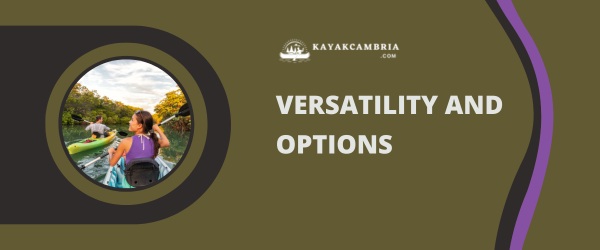
Kayaking offers a variety of options, as you can choose between solo or tandem kayaks, sit-on-top or sit-inside models, and even pedal-powered or motorized versions. Kayaks can be used in various water environments like rivers, lakes, or the ocean, depending on the type of kayak you select.
Rafting experiences are often group-oriented, making them ideal for corporate outings, family trips, or team-building events. Additionally, rafting is typically limited to rivers and specific sections of those rivers, often determined by the rafting company.
Fitness And Strength
Kayaking works the upper body, particularly your arms, shoulders, and core. One of the great things about kayaking is that it allows you to set your own pace, so you can make the activity as leisurely or as intense as you prefer.
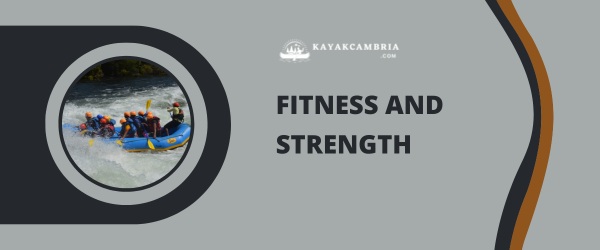
Rafting proves to be a more full-body workout, engaging your core, upper, and lower body muscles as you paddle, navigate rapids, and work with your team. Rafting can be an excellent way to improve overall fitness and endurance.
In summary, both kayaking and rafting offer unique experiences, physical challenges, and various levels of excitement. The best choice for you will depend on your personal preferences, skill set, and the type of adventure you’re looking to have.
Types Of Kayaks And Rafts
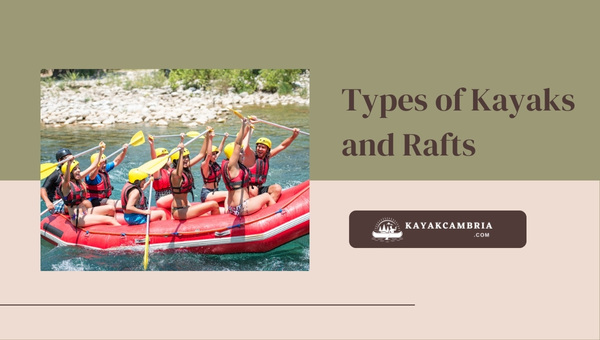
When it comes to kayaking and rafting, it’s essential to know the different types of kayaks and rafts available, as this can greatly impact your experience on the water. In this section, I’ll provide an overview of the various types of kayaks and rafts you can choose from.
Kayaks
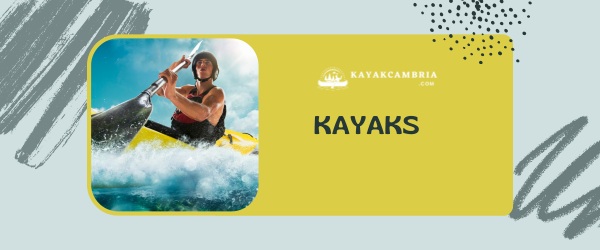
There are several types of kayaks, each designed for specific purposes:
- Recreational Kayaks: These kayaks are designed for calm waters, like lakes, ponds, and slow-moving rivers. They’re perfect for beginners due to their stability, ease of use, and affordability. Recreational kayaks are generally shorter (around 10-feet long) and wider, allowing for greater stability.
- Touring Kayaks: Also known as sea kayaks, touring kayaks are built for long-distance paddling in open waters, such as oceans and large lakes. They feature a longer, narrower design, which makes them more efficient and easier to handle in rougher conditions.
- Whitewater Kayaks: Specifically designed for navigating through rapids and turbulent waters, whitewater kayaks are shorter and more maneuverable. These kayaks are built with reinforced materials to withstand the intense environment they face while whitewater rafting.
- Fishing Kayaks: These kayaks come equipped with features designed to aid in fishing, such as rod holders, storage compartments, and customizable mounts. Fishing kayaks are generally wider and more stable, allowing anglers to focus on their catch.
- Inflatable Kayaks: Inflatable kayaks offer a lightweight, portable option for paddling enthusiasts. While they sacrifice some performance compared to hardshell kayaks, their ease of transport and storage makes them a popular choice for many.
Rafts
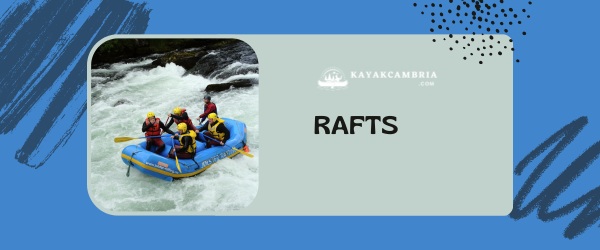
Rafts offer a different experience from kayaks and come in various designs:
- Self-Bailing Rafts: These rafts are designed for whitewater rafting and feature holes on the bottom, which allow water to drain out automatically. They’re built to handle rough waters with several people on board, making them a popular choice for guided rafting trips.
- Oar Rafts: Oar rafts are rowed by a single guide using long oars. They’re typically used for multi-day trips on rivers and offer more stability and control than self-bailing rafts, but require a skilled guide to navigate rapids.
- Catarafts: Catarafts consist of two inflatable pontoons connected by a frame, creating a versatile and stable craft. They can be adapted for various uses, such as fishing or whitewater rafting, by adding appropriate gear and accessories.
- Inflatable Canoes and Kayaks: These rafts are similar to inflatable kayaks in terms of portability and ease of storage. Inflatable canoes and kayaks are geared towards those looking for a more leisurely experience on calm waters.
Understanding the differences between the various types of kayaks and rafts will help you choose the right vessel for your next adventure.
Skill Levels: Kayaking vs Rafting
When considering which water sport to try, it’s essential to understand the skill levels involved in both kayaking and rafting. Different skill levels will determine the enjoyment, safety, and overall experience of each activity.

In the realm of kayaking, it can be divided into various categories, each with its own feature set and skill requirements:
- Recreational kayaking: Ideal for beginners, this type of kayaking entails relaxed paddling on calm water surfaces like lakes or slow rivers. It doesn’t require any prior experience or advanced skills.
- Sea kayaking: More challenging than recreational kayaking, sea kayaking demands experience in paddling on open waters, skillful maneuverability, and knowledge of tides and currents.
- Whitewater kayaking: The most intense form of kayaking, whitewater kayaking takes place in fast-flowing rivers with significant turbulence. This requires advanced paddling skills, knowledge of river rapids, and a high comfort level in turbulent waters.
On the other hand, rafting encompasses an altogether different skill set:
- Scenic or family rafting: Suitable for beginners, this rafting style often covers calm water sections with minimal rapids, making it a relaxed, scenic experience for participants of all ages.
- Whitewater rafting: This adrenaline-pumping rafting type navigates through fast-flowing rapids and turbulent water, with skill requirements depending on the river’s difficulty.
- Expedition rafting: A multi-day journey that tests participants’ resilience and adaptability, expedition rafting combines challenging river conditions with camping and survival skills.
To better grasp the skill levels in both kayaking and rafting, a reference scale called the International Scale of River Difficulty is used:
| Classification | Description | Skill Level | Sport |
|---|---|---|---|
| Class I | Easy and small waves | Beginner | Kayaking |
| Class II | Moderate difficulty | Intermediate | Kayaking |
| Class III | Moderate to difficult | Intermediate | Rafting |
| Class IV | Very difficult | Advanced | Kayaking, Rafting |
| Class V | Extremely difficult | Expert | Kayaking, Rafting |
| Class VI | Almost impossible | Elite/Professional | Kayaking, Rafting |
Excitement Factor In Both Activities
When it comes to thrill and excitement, both kayaking and rafting offer their own unique experiences. In this section, we’ll compare the heart-pumping aspects of both sports, helping you decide which one is perfect for your next outdoor adventure.

Kayaking provides an intimate experience with nature, as I quickly glide through the water close to its surface. The adrenaline rush comes from the challenge of navigating through various water conditions and obstacles, depending on the environment. Exciting factors in kayaking can include:
- Paddling through rapids and whitewater
- Sea kayaking among waves and surfing on beaches
- Exploring caves, waterfalls, and hidden coves
- Close encounters with wildlife
Rafting, on the other hand, offers a different kind of excitement, as it’s usually a group activity with more people on a larger inflatable craft. The exhilaration comes from:
- Navigating fast-paced rapids or big waves
- Teambuilding and collaboration to steer the raft safely
- Making thrilling jumps or “surfing” the raft on standing waves
- Experiencing “flip” scenarios during extreme conditions (under professional supervision)
Comparing the excitement factor of both activities depends on the specific environment and intensity level you’re looking for. Check out the following table to review the intensity ratings for various categories:
| Scale | Adventure Type | Kayak Intensity | Raft Intensity |
|---|---|---|---|
| Low | Flatwater | Relaxed paddle | Leisurely float |
| Medium | River | Moderate rapids | Moderate rapids |
| High | Whitewater | Challenging rapids | High energy rapids |
| Extreme | Open Water | Ocean surf, giant waves | Big wave rafting, waterfall drops |
Note that safety should always be your top priority! No matter what the excitement factor, it’s essential to always have appropriate safety gear, follow local regulations, and seek professional guidance if needed. In both kayaking and rafting, you can find a range of experiences to satisfy your thirst for adventure – from tranquil, scenic journeys to pulse-pounding, high-intensity exploits.
Safety Concerns And Precautions
Safety should always be a top priority when engaging in water sports like kayaking and rafting. I’ll be diving into the risks associated with both activities and the precautions we can take to minimize them.

Kayaking poses its own set of safety concerns, which include:
- Capsizing: Kayaks can tip over easily, especially in rough water, and it’s crucial to know how to perform a self-rescue.
- Hypothermia: Prolonged exposure to cold water can lead to hypothermia; therefore, it’s essential to wear appropriate clothing to protect against the elements.
- Collision: Accidents can happen when navigating through crowded waterways or high-traffic areas, so it’s important to be aware of your surroundings and maintain a safe distance from other vessels.
- Inexperience: Proper kayaking techniques and safety training can go a long way in preventing accidents.
To address these concerns, I highly recommend the following precautions:
- Take lessons and practice self-rescue techniques before heading out.
- Always wear a life jacket or personal flotation device (PFD).
- Use appropriate clothing, such as a wetsuit or drysuit in cold water.
- Be cautious and mindful of your surroundings, other paddlers, and potential hazards.
- Check weather and water conditions in advance.
- Equip your kayak with safety gear, such as a bilge pump, paddle float, and signaling device.
Whitewater rafting has a different set of safety concerns due to the group dynamic and the challenges of navigating through rapids. Let’s look at a few key factors:
- Group control: Coordinating with other paddlers in your raft can be challenging, which may lead to disorganization during critical moments.
- Pinned rafts: A raft can easily become stuck on rocks or other obstacles, potentially leading to dangerous situations for its occupants.
- Swimming in rapids: Falling out of the raft during rapids can expose a person to many hazards, including being submerged underwater, striking rocks, or becoming separated from the group.
- Equipment failure: Malfunctioning or damaged equipment can put the entire group at risk.
To mitigate these risks, consider taking the following precautions:
- Only go rafting with a certified guide or experienced group leader.
- Develop strong communication skills and teamwork within the group.
- Wear a life jacket or PFD and dress appropriately for the water temperature.
- Learn how to swim in whitewater and become familiar with self-rescue techniques.
- Conduct regular equipment checks and maintenance.
By being mindful of the safety concerns and precautions associated with both kayaking and rafting, we can drastically reduce the risks and enjoy these thrilling water sports with confidence.
Common Kayaking And Rafting Destinations
When it comes to kayaking and rafting, there are countless destinations around the world that cater to both beginners and experienced adventurers. Some of the top destinations, ranging across several continents, are well-known for their challenging rapids, stunning scenery, or diverse wildlife.
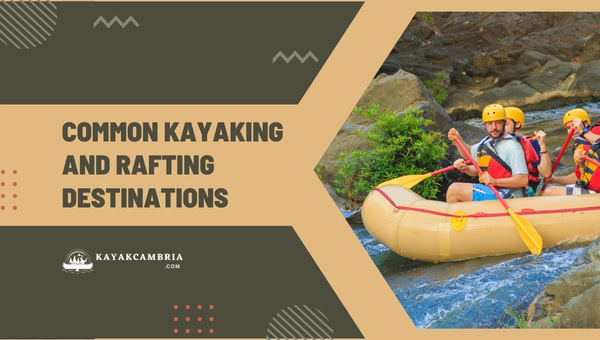
United States
I can’t talk about amazing kayaking or rafting destinations without mentioning the U.S, which offers a wide range of thrilling outdoor spots. Some of the most popular places include:
- The Colorado River runs through the spectacular Grand Canyon, offering both rafting and kayaking excursions with varying difficulty levels.
- The Arkansas River in Colorado has a fantastic mix of calm and challenging rapids, perfect for all skill levels.
- The Salmon River in Idaho is known for its scenic beauty and dramatic canyons while allowing paddlers to unwind as they journey along its waters.
Europe
White water enthusiasts can also explore numerous options in Europe. With so many awe-inspiring rivers to choose from, you surely won’t be disappointed! Here are just a few:
- The Soca River in Slovenia has clear, turquoise waters that flow through the Julian Alps, providing ideal conditions for both rafting and kayaking.
- Scotland’s River Tay is perfect for those who love to experience the thrill of white water rafting in a majestic landscape.
- The Verdon Gorge in France is popular for its dazzling turquoise river as it winds through vertiginous cliffs, making it a must-visit for kayakers.
Asia
Lastly, let’s not forget about the incredible kayaking and rafting opportunities available in Asia. Bite-sized list of destinations:
- The Teesta River in India offers rapids for all skill levels and stunning views of the surrounding Himalayan mountains.
- The Sun Kosi River in Nepal promises both high adrenaline pumping rapids and serenity as it meanders through the impressive Nepalese countryside.
- Bali’s Ayung River in Indonesia is a globally-renowned rafting destination that takes you through dense jungles, waterfalls, and fascinating wildlife encounters.
Equipment Comparisons And Costs
When discussing kayaking and rafting, it’s important to analyze the equipment used in each activity and their associated costs. Let’s dive into the details to see how these two outdoor adventures compare.
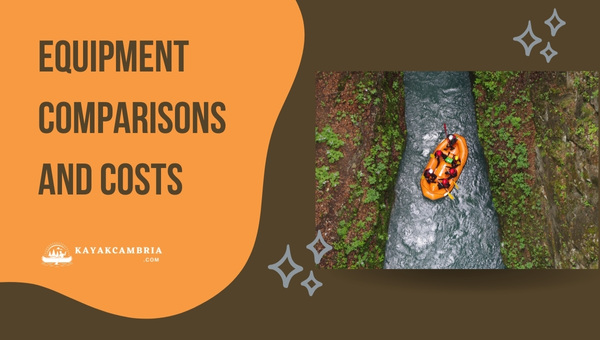
Kayaking equipment generally consists of:
- Kayak (single or tandem)
- Paddles
- Personal flotation device (PFD)
- Spray skirt (optional)
- Dry bag for personal belongings
In terms of average costs, the table below provides a comparison:
| Item | Average Cost |
|---|---|
| Kayak | $300 – $1,500 |
| Paddle | $30 – $200 |
| Personal flotation device | $50 – $100 |
| Spray skirt (optional) | $50 – $150 |
| Dry bag | $15 – $60 |
Rafting equipment, on the other hand, typically includes:
- Inflatable raft
- Paddles
- PFD
- Helmet
- Dry bag for personal belongings
The average costs for rafting equipment are listed in the table below:
| Item | Average Cost |
|---|---|
| Inflatable raft | $500 – $5,000 |
| Paddle | $30 – $200 |
| Personal flotation device | $50 – $100 |
| Helmet | $50 – $100 |
| Dry bag | $15 – $60 |
It’s evident that both kayaking and rafting require similar basic equipment, such as paddles, PFDs, and dry bags. However, the biggest difference comes down to the cost of the watercraft itself. Kayaks tend to be more affordable, ranging from around $300 to $1,500, while inflatable rafts can be significantly more expensive, with prices ranging from $500 to $5,000.
Another factor to consider is that many rafting trips are organized with licensed guides or outfitters. This means that rafters often don’t need to invest in the equipment themselves, as the necessary gear is often included in the price of the trip. In contrast, those who want to pursue kayaking as a regular hobby often need to purchase their own equipment.
Maintenance costs for both activities should also be considered. Kayaks are relatively low-maintenance, with occasional cleaning and inspections required. Inflatable rafts may need more frequent checks for leaks, patches, and seam integrity, which can add to the overall cost over time.
In summary, the equipment costs for kayaking and rafting vary significantly, especially in terms of watercraft pricing. Those who prefer not to invest in equipment may find rafting with an outfitter more appealing, while kayaking might be a better option for those looking to own their gear and enjoy a lower price point for watercraft.
Environmental Impact Of Kayaking And Rafting
When considering kayaking and rafting, it’s essential to think about their respective environmental impacts. Both activities offer recreational opportunities and allow participants to experience nature firsthand. However, they also interact with the environment in various ways.
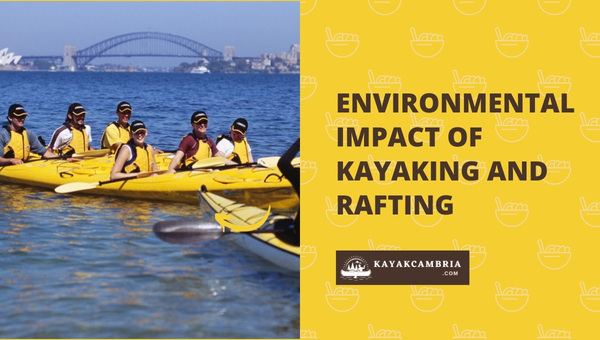
Kayaking, a low-impact activity, usually has minimal environmental effects. Kayaks are human-powered and produce no emissions. Kayaking’s low profile on the water is gentle on the shoreline and helps preserve delicate ecosystems. When practicing responsible kayaking, some key points to remember are:
- Avoiding sensitive habitats, such as nesting areas and breeding grounds
- Staying on established water routes
- Practicing ‘Leave No Trace’ principles (i.e., pack out what you pack in)
- Being watchful for wildlife and maintaining a safe distance
On the other hand, rafting can sometimes have more significant environmental consequences. Rafts are often larger and heavier than kayaks, leading to a greater disturbance of waterways and shorelines. In certain cases, rafts may be powered by motors, which contributes to water and air pollution. Nevertheless, responsible rafting practices can help to reduce these negative effects. A few key guidelines include:
- Using human-powered rafts whenever possible
- Avoiding overused or ecologically sensitive areas
- Being respectful of wildlife and observing from a distance
- Practicing ‘Leave No Trace’ principles, just as in kayaking
In both kayaking and rafting, the environmental impact also depends on the location and the popularity of the destination. For instance, heavily-trafficked rivers and waterways may have a higher risk of negative effects due to the volume of visitors.
Fitness Benefits Of Paddling Sports
When comparing kayaking and rafting, it’s essential to consider the fitness benefits of these paddling sports. Both activities offer a fun way to enjoy the great outdoors while boosting your health and fitness levels. In this section, I’ll discuss specific fitness benefits you can expect when participating in kayaking or rafting.
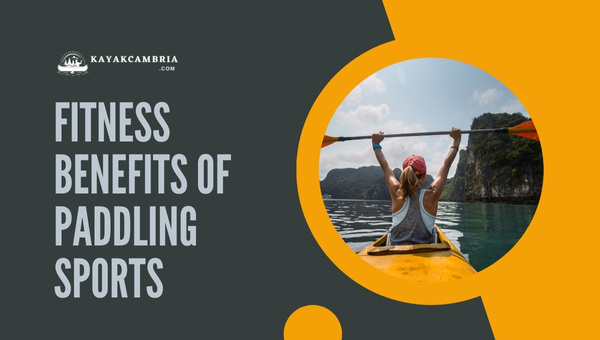
- Upper Body Workout: Paddling sports like kayaking and rafting engage your arms, shoulders, and upper back muscles. Continuous paddling, using your arms and rotating your torso, targets these muscles effectively. Both kayaking and rafting provide an excellent upper body workout that can improve your strength and endurance over time.
- Cardiovascular Health: Participating in any aerobic exercise can boost your cardiovascular fitness, and kayaking and rafting are no exception. These activities increase your heart rate as you paddle through the water, promoting better blood circulation and improving overall heart health.
- Core Strength: Want a stronger core? Look no further than kayaking and rafting. Both sports require you to maintain balance and stability while navigating through the water. This constant engagement of your core muscles develops and strengthens your abs, obliques, and lower back.
- Low-Impact Exercise: If you’re searching for low-impact exercises that don’t strain your joints, kayaking and rafting are perfect options. The movement in paddling sports is gentle on your joints, especially compared to high-impact activities like running or jumping.
- Calorie Burning Potential: Paddling sports can help you burn calories and potentially lose weight, depending on the intensity of your session. Here’s a breakdown of the average calories burned per hour for each activity:
| Activity | Calories Burned (per hour) |
|---|---|
| Kayaking | 283 – 454* |
| Rafting | 300 – 600** |
* Based on a 155 lb person; Source: Harvard Health Publishing
** Based on a 155-185 lb person; Source: Nutristrategy
Remember that factors like your weight, fitness level, and paddling intensity can affect the number of calories burned during a session.
To sum up, kayaking and rafting offer unique fitness benefits for enthusiasts:
- Upper body workout
- Improved cardiovascular health
- Increased core strength
- Low-impact exercise
- Calorie burning potential
Participating in paddling sports can be a wonderful addition to your fitness routine, complementing other exercises to help you achieve your health and wellness goals.
Conclusion
Deciding between kayaking and rafting can be tough, as both offer unique experiences and benefits. Here’s a summary of the key differences to help you make an informed choice:
- Level of Control: In a kayak, I have greater control over the direction and speed, while in a raft, I must rely on teamwork and coordination.
- Challenge and Skill Level: Kayaking can be more challenging and requires learning specific techniques, whereas rafting is often easier for beginners to try.
- Group or Solo Experience: If I want a group adventure where collaboration is essential, rafting is the better option. Kayaking, on the other hand, can be done solo or in small groups.
- Scenery and Exploration: Kayaking allows for greater exploration of smaller waterways, while rafting usually takes place on larger rivers where there is plenty of open water to navigate.
Ultimately, my choice between kayaking and rafting comes down to personal preferences, the type of adventure I’m seeking, and my skill level. I might find kayaking more appealing if I’m looking for a solo or intimate experience that challenges my abilities. On the other hand, rafting could be the perfect choice for me if I want a fun, team-oriented activity that requires less technical skill.
It’s also worth considering that I can try both activities and see which one I gravitate toward. There’s no rule that says I have to choose only one! The more experience I gain, the better I can determine which water sport suits my preferences and interests.
In any case, both kayaking and rafting provide opportunities to connect with nature, enjoy stunning scenery, and embark on thrilling adventures. Whichever option I decide on, I’m sure to have an unforgettable experience.

